
Six Months In A Leaky Boat!
I grew up thinking “monsoon” had a mysterious and exotic ring to it. It’s true that in NZ we can experience a taste of “four seasons in one day”, but the thought of a season that consists just of “rain” seemed pretty extreme. Certainly this would turn life upside down!?
During a family vacation to India back in the 80’s, we saw the city-wide construction disruption in Calcutta (now Kolkata) that would eventually become the city’s Metro. A cynical local explained at the time that the tunnels and station excavations flooded during the monsoon and would then take a further three months to pump dry – thus allowing only six months per year for actual construction work. The first metro line took over ten years to open, so I wonder if there was some truth in this.
The arrival of the monsoon is awaited with a sense of anticipation because it brings cool(er) relief to the hot and sticky season which immediate precedes it. In particular, the two or so weeks before it’s arrival are characterised by spectacular dusk thunder and lightening storms that feel like they threaten a deluge, but are mostly show and only brief (albeit intense) rain. Many of our marina sundowner sessions were cut short by such a dramatic show of nature’s power! During one such blow I lost my pontoon bath – the last we saw was it drifting towards the open sea…



I miss my bath…
I grew up on a small berry farm in New Zealand and I remember my dad gritting his teeth when the radio weather confirmed “good weather” in the forecast – meaning sunny and no rain. On a berry farm this is the opposite of what certain growing phases need, so I’m always been aware that not everyone needs sunny dry days all the time! In south India this also translates as the ability to fill the hydroelectric dams – the main source of energy generation in Kerala state.
The monsoon’s arrival kind of rolls across and over much of Asia – rolling up the Malaysia peninsula from mid-May, hitting us in the south of India at the beginning of June and up to the north of India at the beginning of July. As the anticipation builds, so too did the entertainment factor of the newspapers – each trying to predict the exact arrival date with greater accuracy. The monsoon brings with it not just rain but also disturbed weather and consistent wind from the south west. Accordingly, it plays a big part in cruisers’ passage planning. The month before and the month after the monsoon are characterised by increased chance of tropical storms, and so these are no-go periods for all except the most (fool?)-hardy sailors. Even in the relatively sheltered marina, our Indian courtesy flag whipped itself to the threads, such that Helen undertook a running repair!


The pups waiting for sundowners 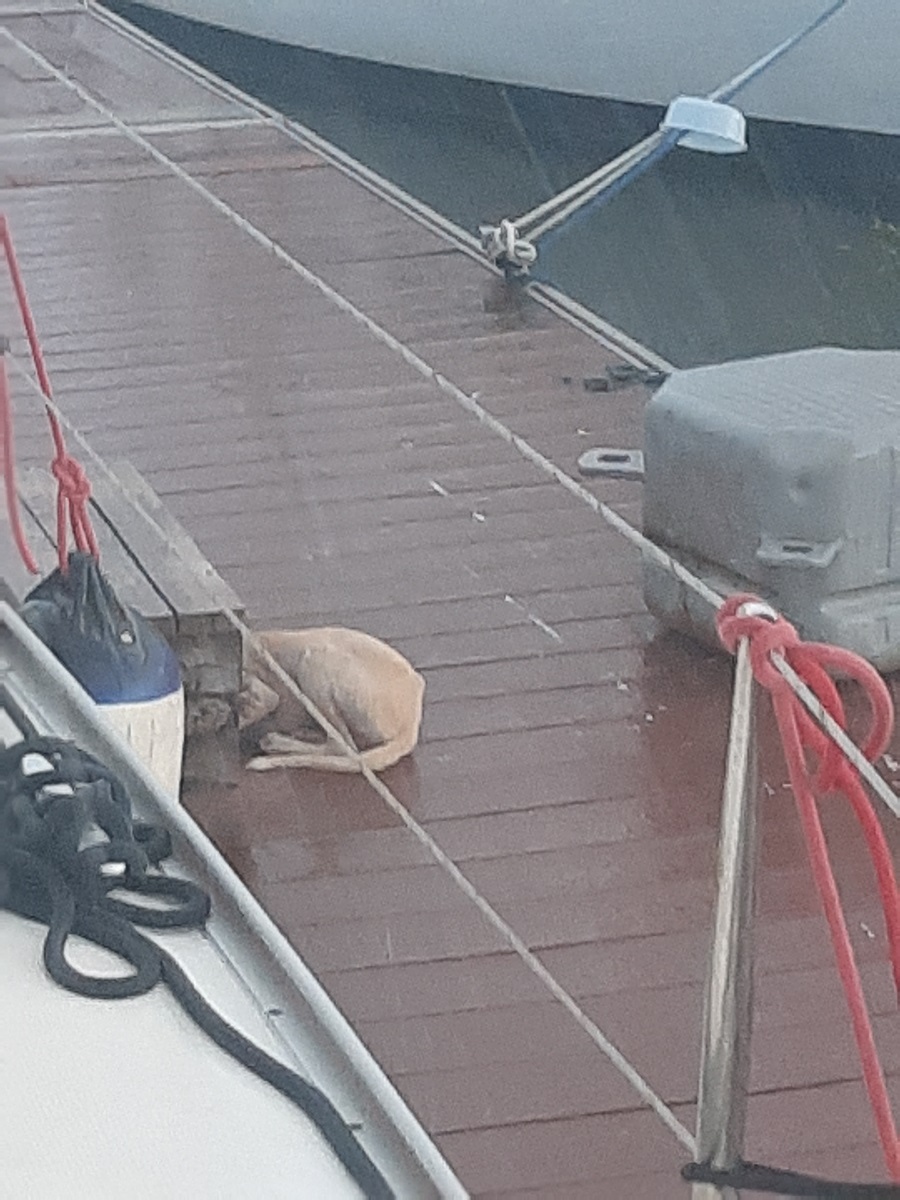
Silly Boss ‘sheltering’… 
As good as new!
Flooding is a major issue in India, caused as much by the lack of maintenance to drainage infrastructure as from the actual water itself. The Indian constitution recognises 22 official languages and I doubt that any have a word that means “maintenance”. It just doesn’t happen. With such a huge pool of cheap labour, I just don’t understand why. The drains and canals are perpetually choked with garbage and the detritus of human existence from such a massive population, they are rapidly overwhelmed and it’s no surprise flooding follows.
June and July this year were fairly mild in their rainfall and I must admit to being a little disappointed. This wasn’t the four months of continuous rain I was led to expect! Most but not all days enjoyed rain, typically in the afternoons only. But the heaviest month, August, has so a far really exceeded expectations! There have been times when the rain doesn’t stop for a whole day, or barely stops over several days. In fact, the first 10 days of August saw more than the average rainfall for the whole of the month. At times I’ve been pleased to be living on a boat – we simply rise above it all!
There have been a few downsides. One is that the ropes, canvas, even the fibreglass deck, take on a life of their own – literally!! The ropes and canvas never really dry out and starts getting a little whiffy. The deck seems to be a nice environment for growth of green algae. We had one scrubbing session in a particularly heavy deluge – in the warm rain it doesn’t matter that you’re drenched right through yourself. On the positive side, growth on the hull at the waterline seems to lessen, apparently because the critters (mainly barnacles and little muscle mollusks) don’t do so well in the fresh water, which floats on the sea water. You can tell when there’s more rain water than sea water in the marina – it has a chocolate brown colour from the streets which haven’t had a clean since the previous rains!
Another major downside is that we’ve discovered a number of leaks aboard Aroha. Don’t worry – they’re all above the waterline! When you see water pooling inside your boat, the first thing you do is taste a drop or two. Salty – from the sea or engine cooling. Fresh – rainwater or from the internal water tanks. You also hope that you are not going to discover a leak from the loo! Rainwater leaks are notoriously challenging to trace because the route of the water from ingress to where you can see it can be convoluted and not at all obvious. It took us about a week to trace a number of leaks – the main culprits being port light frames where the fixing screws have worked themselves a little loose. In our thorough checking we also discovered a couple of slow leaks, generally where water has seeped in through screw fittings through the deck – not of immediate concern, but a long term problem if not treated, as they tend to weaken the timber or whatever the water saturates. Even a small amount of water can wreak havoc though, as we discovered with one leak that had been merrily dripping away behind the vinyl cladding in the aft cabin and soaking the mattresses. We discovered the smell of mould and damp before we found there was a leak!
On a positive note, it’s beautiful going to sleep when the rain is drumming on the deck, just a foot or so above your head. But we found that the relentless deluge through the first half of August became a little depressing and repetitious after a while. It is also a bugger to get washing dry! Our world on Aroha is already small enough, it’s so much worse when cushions and tool boxes are strewn around our tiny living space, as we trace yet another trickle of water.
If not for COVID we would not have been in India for the monsoon. After 14 years living in Dubai (where you were lucky if it rained 4 times a year), experiencing the monsoon in India has been just that – an experience. All part of life onboard, and all helps to get to know the boat better. It’s true that when it rains it pours… but remember that without the rain there would be no rainbow!
Follow and like us to be notified of future blogs!
www.facebook.com/ripeningnicely




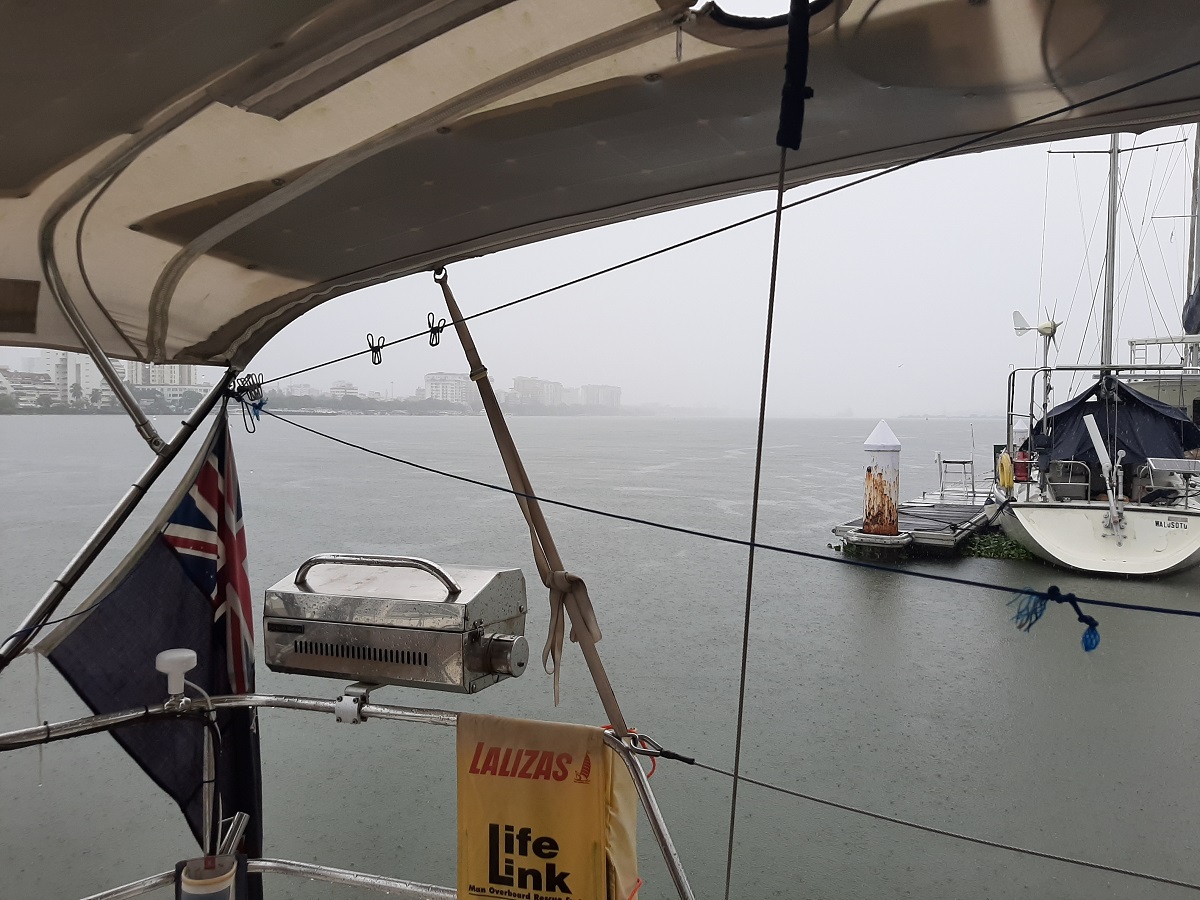
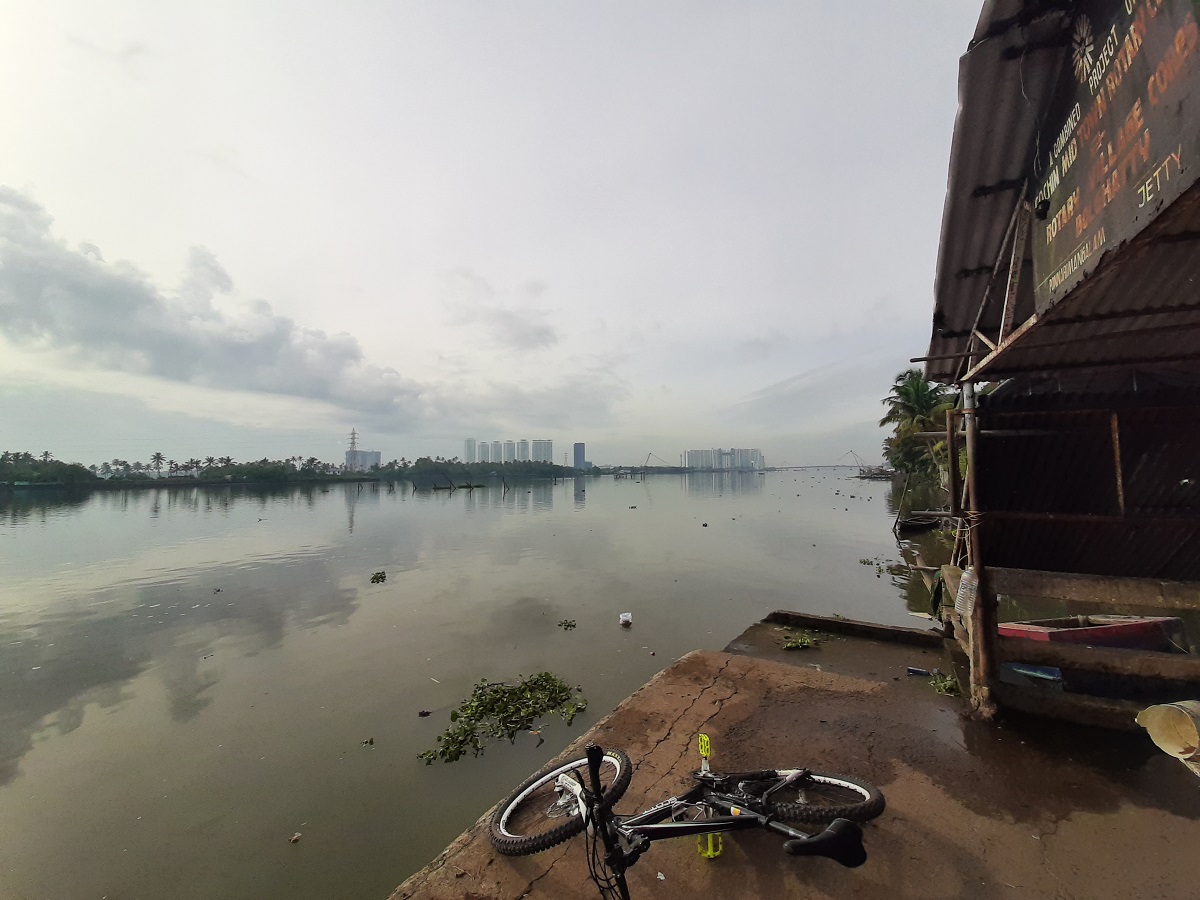

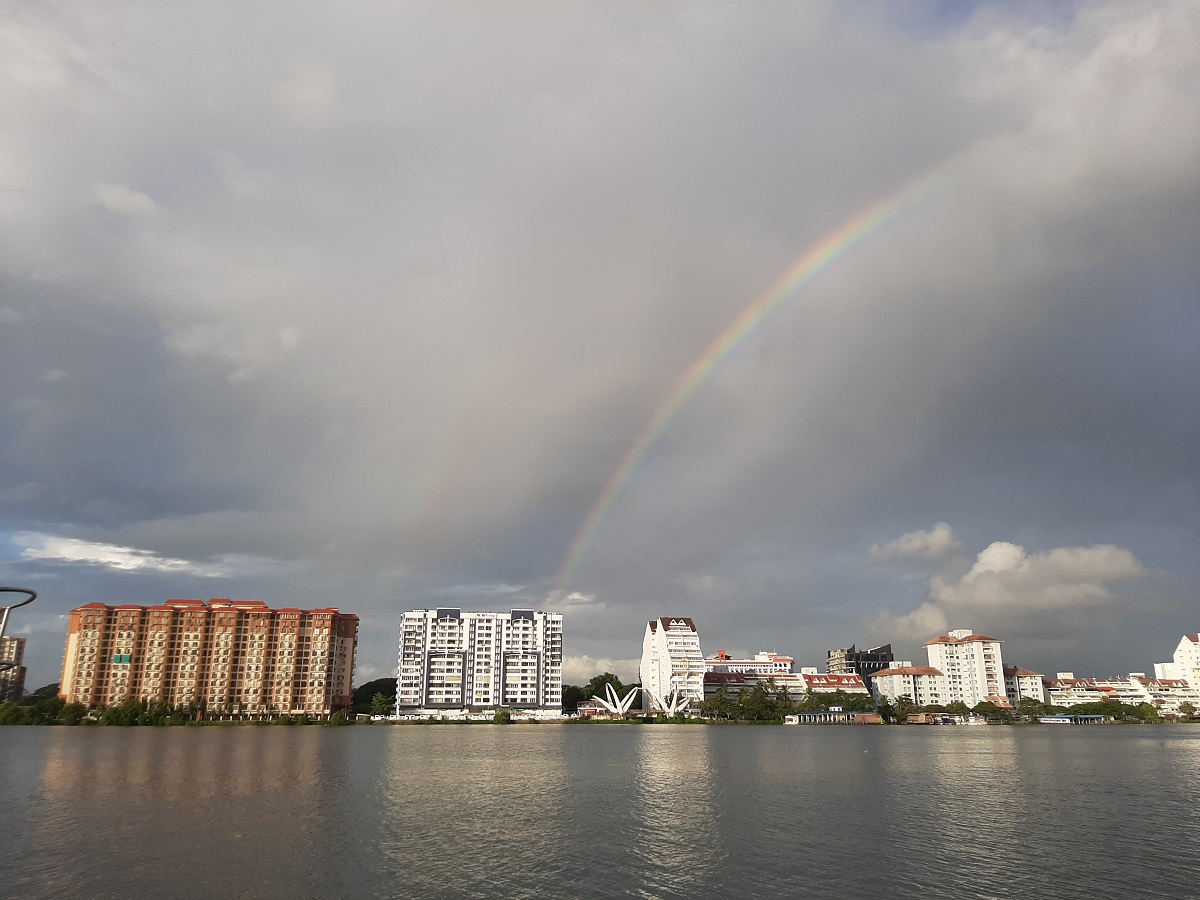
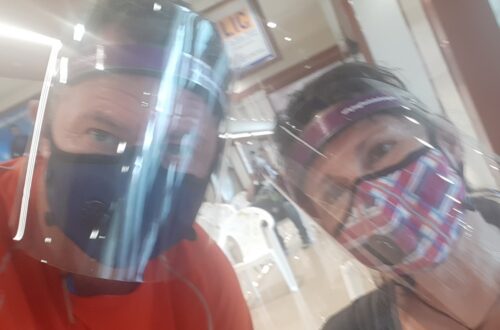


3 Comments
Jacqui oneill
Love it and enjoyed the references to crowded house 😜 songs
Good you found the leaks now so that if you manage to leave it will still be floating on your return
Enjoyed the pictures also, hope the rain has alleviated and you are not as confined to the cabin now
Helen
Well spotted Jacqui. There was a Split Enz one there too!
Joan Poole
Hi Bryan and Helen
I enjoy reading your blogs they give a real insight into what life is throwing at you.
In my former life we had a 6 berth river cruiser so I understand very well the problems of water leaks etc.
Love Joan xx